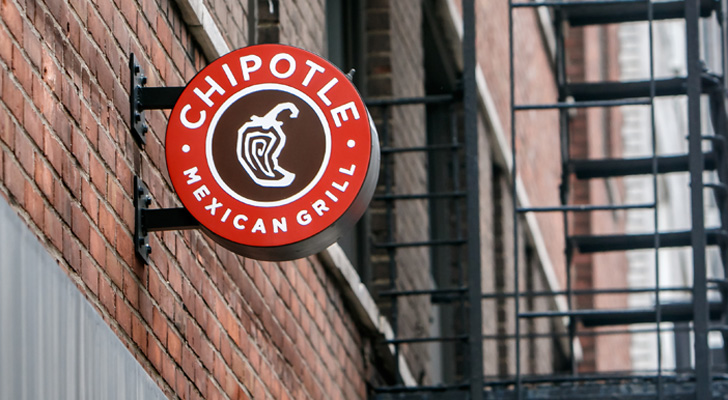
Image source: The Motley Fool.
Northern Oil & Gas Inc (NYSEMKT:NOG)Q4 2018 Earnings Conference CallMarch 12, 2019, 11:00 a.m. ET
Contents: Prepared Remarks Questions and Answers Call Participants Prepared Remarks:
Operator
Greetings, and welcome to the Northern Oil and Gas Fourth Quarter and Year End 2018 Earnings Conference Call. At this time, all participants are in a listen-only mode. A question-and-answer session will follow the formal presentation. (Operator Instructions) As a reminder, this conference is being recorded.
It is now my pleasure to introduce your host, Mr. Brandon Elliott, Chief Executive Officer. Thank you, sir. You may begin.
Brandon Elliott -- Chief Executive Officer
Thanks, Jessie. Good morning, everyone. We're happy to welcome you to Northern's fourth quarter 2018 earnings call. Before we get to the results, let me cover our safe harbor language. Please be advised that our remarks today, including the answers to your questions, may include forward-looking statements within the meaning of the Private Securities Litigation Reform Act. These forward-looking statements are subject to risks and uncertainties that could cause actual results to be materially different from the expectations contemplated by these forward-looking statements. Those risks include, among others, matters that we have described in our earnings release, as well as in our filings with the SEC, including our annual report on form 10-K and our quarterly reports on form 10-Q. We disclaim any obligation to update these forward-looking statements.
During this conference call, we may discuss certain non-GAAP financial measures, including adjusted net income and adjusted EBITDA. Reconciliations of these measures to the closest GAAP measure can be found in the earnings release that we issued early this morning or in our updated investor presentation on our website.
All right, we're going to switch up the batting order this quarter. We're going to let Bahram Akradi, our Chairman walk through some comments as both a Board Member and a large shareholder. We will then turn the call over to Nich O'Grady, our CFO for his comments and to highlight some of the financials. Then, I will take it back and make a few summary comments and then, we will go ahead and open the call up to Q&A. We obviously have a few others in the room with us today to help with the Q&A portion, our President and Founder, Michael Reger; Adam Dirlam, our EVP of Land; Jim Evans, our VP of Engineering, as well as Chad Allen, our Chief Accounting Officer.
With that, I will turn the call over to Bahram.
Bahram Akradi -- Chairman
Thanks, Brandon. Nick and Brandon provided feedback to me from their most recent investor meetings. I'm looking forward to taking this opportunity to provide you with our strategy and forward path for Northern Oil and Gas. Let me start by saying, it's always crucial to listen to all the investors, analyze, rationalize and incorporate into our overall strategy, all that makes sense. And finally, decisively make the best decision for the entity itself in this case Northern Oil and Gas, by always focusing on what's best for Northern Oil and Gas, our shareholders, vendors and employees will be rewarded.
So here is an attempt to provide a clear and concise path for Northern Oil and Gas in 2019, 2020 and beyond. Number one, remain free cash flow positive with oil prices in the $40 range. Number two, keep the debt-to-EBITDA below 2 at all times and generally closer to 1. Number three, broad debt adjusted cash flow per share. We view this as the best metric to show true meaningful growth. Four, grow the Company's production and cash flow without compromising any of the three points I just made. Five, be prepared to replace our second lien bonds on or before May 2020. This should create up to $25 million of incremental cash flow.
Six, coinciding with replacement of the second lien bonds begin a sustainable dividend, returning a portion of this incremental cash flow to our shareholders. And number seven, unless essentially strategic, all acquisitions must be accretive to all metrics. The rest of the team will provide more detail to the outline that I just conveyed.
Before I turn it over to Nick, I would like to respond to the comment, we often hear that we as a non-operator do not have control of our own destiny. This may be true with much smaller non-operators. Northern Oil & Gas has significant liquidity over 157,000 acres interest in over 5,000 wells in the basin and we work with over 40 different operators. This gives us an incredible amount of flexibility to deploy significant capital, efficiently and accurately into new opportunities and our 2018 results demonstrates disadvantage.
Over the last year, we have more than doubled the size of the Company maintaining the same 20 employees that we have had. We can do this again and again with the same team. I love the efficiency of Northern Oil and Gas, and I want to thank the Northern team for an exceptional execution in 2018. Thank you for listening and I look forward to answering your questions later in the call.
Now let me turn it over to Northern CFO, Nick O'Grady. Nick?
Nicholas O'Grady -- Chief Financial Officer
Thanks, Bahram. A year ago, as Northern began its resurgence, knowing we had a good high margin asset base, we set out to grow that asset base to a size where it could generate more cash than it requires to sustain itself. And to do so in a manner that allows for flexibility and allocation in return of that capital. As I've said tongue in cheek to many investors, we were doing this before, it was cool. Given the volatility, we've seen in the sector since we last reported, it's worthwhile having a quick discussion about our leverage, our cash flow profile and the steps we've undertaken as a management team to shield the Company from the ups and downs of the commodity cycles.
The first issue worth discussing is one-off margins. We've highlighted this to investors in recent presentations, but I'll say it again. Our asset, a combination of high oil cuts, low operating costs and extremely low G&A simply has higher margins. As a result, the cash break-even point for our asset is very low and we believe, we would continue to produce excess cash flow without hedges down to $40 per barrel based on reasonable activity assumptions in these various scenarios. Our hedging program among the best in North America, insurers will earn more than that for each of the next three fiscal years. And as a result, we should continue to generate more cash to augment the business.
Our debt-to-EBITDA finished the year at 2.3 times trailing at about 1.7 times last quarter annualized. We would expect that at the current levels of activity and the strip for this to continue to ratchet down throughout the end of this year and beyond. After a very busy back half of 2018, our maintenance capital program this year is likely the highest it will be for some time. And so the sustaining capital call on our asset will likely narrow in the coming years. This is important, because as our hedge book steps down over time, so does the call on our cash flow to maintain itself.
In a nutshell, we took a balance sheet from over 6 times levered a year ago and build a cash machine that should continue to derisk itself over time. Half of our management incentive compensation is tied to our absolute stock price performance. The other half is tied to debt adjusted cash flow. For those of you unfamiliar, debt adjusted cash flow in simple terms, treats all debt as if it were shares. It encourages us to one, not leverage the Company up in any way to create unsustainable cash flows, but risk the Company.
And two, it treats debt repayment and thus retirement of debt adjusted shares on a more equal footing. In the end, if we chose to grow faster and deploy all of our cash flow, we would likely show significantly higher growth. However, we are not solving for a growth rate, but for a total return to our shareholders. Shrinking our enterprise through debt repayment increases the shareholders call on the cash flow. This is something often forgotten by many until the debt actually has to be paid back. Therefore, over the next few years, even with only modest mid to low-single digit top line growth, we can use our large expected free cash flow yield to create a much greater total return, including dividends and bolt-on acquisitions that augment this free cash flow profile, as well as grow our inventory.
For 2019, our guidance in the release implies 37% year-over-year production growth, in part driven by a very strong exit rate to the year, which was driven both by acquisitions and significant organic growth in the back half of 2018. The midpoint of our 2019 guidance implies 30 net wells and approximately 35,000 Boe per day, which is toward the lower end of the 30 to 36 well forecast we gave in November. Understand clearly, we don't see a degradation of capital efficiency or higher decline rates, instead, we are simply updating our expectations based on recent curtailments and the timing of completions due to lower oil prices after a volatile quarter and tough winter period.
All in all, it's important to know that, of course, if we chose, we could more aggressively seek higher growth. But again, with a lower spending implied in our guidance will simply generate more free cash flow instead. We'll monitor activity in the field to determine from time-to-time whether warrants a more aggressive approach.
Moving onto our cost expectations. Our differential guidance is relatively in line with previous years at $4.50 to $6.50. Things that will impact our differentials are Canadian production, pipeline expansion timing and overall production growth in the basin. Differentials have generally improved steadily throughout the first quarter of 2019 from very tough levels in the fourth quarter. I'll remind investors that railcar availability, a big issue in the fourth quarter is being solved longer term. So while basis issues may pop up from time-to-time, we expect excess rail capacity to mitigate the issue better in the future.
Lease operating expense was a stellar $6.43 per Boe for the fourth quarter and we are guiding to $6.75 to $7.75 per Boe for 2019. We expect LOE to rise modestly from tje fourth quarter with a flattening of the overall activity, it still be lower year-over-year. G&A will continue to be industry leading with cash G&A expected to fall between a $1 and a $1.25 per Boe. We believe this is less than half of the industry average. For frame of reference, the Northern shareholder should accrete over $20 million of cash flow per year in G&A savings versus a typical E&P at a $3 G&A charge.
As Bahram mentioned, as we grow this business both organically and inorganically, we believe we can drive these units -- unit costs lower over time continuing to expand our margins. We've spoken with our investors about the long term plans for the second lien bonds and our desire to retire them. These bonds are callable in May of 2020 at 104% of par. The ultimate recipe for us in terms of how best to complete the refinancing is one that continues to evolve as we do our own internal analysis and seek that of our advisors.
What we can tell you is that we expect, depending on the expansion of our credit line that we would see substantial interest savings net to the shareholder for any refinancing we do. Our $750 million credit facility is strong and most likely to get stronger and so we do not believe we have to replace the bonds with a like kind of size offering. The question of the timing around calling these bonds early will come down to a mechanically precise calculation of the payback period for the extra cost associated with doing so.
In addition, the more restrictive elements of our 2018 debt restructuring will be removed and with more appropriate covenants for a covenant with our -- for a Company with our credit profile, we will at that time be able to be more aggressive as it pertains to share buybacks and dividends. I will caveat all this by saying, however that as Bahram stated before, we are extremely leverage sensitive. Buybacks and dividends must go hand in hand with low leverage and leverage that can continue to be reduced over time. We spent a ton of time on the road recently, speaking with all kinds of investors. The apathy and poor performance of energy stocks over the past decade has led to a real struggle to define what strategy will be the most effective long term.
For us with our strong margins and strong cash flow profile, we think a balanced approach is one that makes sense. We believe that we can, one, continue to reduce debt year-in, year-out. Two, while share repurchases aren't extremely popular these days given our extremely low market valuation, we believe they compete for capital. I get asked sometimes directly by investors what the right valuation for our businesses. We of course, have our internal views and analysis. And it's a difficult question to answer on the spot. But we can tell you one thing, it is not the current valuation the market ascribes to us.
Three, we will continue to augment the asset both at the ground game level and with packages for sale over time. We believe these only add to our inventory, reduce the pull on our legacy acreage and at the same time generally adds the long term free cash flow wedge we generate. And finally, four, dividends are clearly the favorite instrument by most investors today, but there has been some debate about the best way to do it. We believe a modest regular dividend is important for consistency, but we would not argue with the idea that in very high price cycles or over time, as leverage falls dramatically, that it could make sense for special dividends from time-to-time. The key tenant of all the things I discussed above is balance. We are in a depleting business, so we must generate returns, return some of that, reinvest in the asset and augmented by tacking on when appropriate.
We are ultimately a financing Company. We pay for land, wells we participate in, and receive an economic return on the back end. It is critical in our opinion, as we earn returns that vastly exceed our cost of capital to lock in those returns as we deploy, said capital. We believe that risks are broadly asymmetric for hedging. If we're wrong and prices go higher, so do likely will be activity giving us more volume for future prices. If the hedge is proved right and prices crash, activity is likely to fall and we become naturally more hedged and can harvest more cash.
In conclusion, we're among -- the most hedged at the best prices of any Company in North America and we expect to continue to be opportunistically. Before I conclude, there's one final point I want to address. If you see Page 13 of our updated investor presentation, you'll see we give our average cumulative performance by vintage for our wells, just like we give you actual fully loaded well costs. We also give you our overall well performance, not theoretical costs and not cherry picked well performance.
I'll conclude by saying, we are all very proud of what we achieved to make the Company so sound financially, but we are by no means satiated. We will continue to find ways to make Northern better, more competitive and a more desirable investment.
I'll now turn it over to Brandon.
Brandon Elliott -- Chief Executive Officer
All right. Thanks, Nick. I'm going to summarize from a high level what I hope you've heard from us this morning. First, I hope you realize that we have very good alignment from our Board, our Chairman and our Management Team, that our Board is striving to align all of us with shareholders. Second, I hope you heard some clear objectives. We are positioning this Company to generate durable cash flows, regardless of commodity prices by controlling our capital spend both higher and lower depending on the commodity prices that are in front of us. We are driving debt lower, with debt-to-EBITDA sub 2 times now and striving for 1 times to 1.5 times as soon as possible.
We will maintain as Nick mentioned, an active hedging program, locking in some of the returns we expect when we commit shareholders capital. As Nick mentioned, the cash flow from these hedges will also allow us to invest counter cyclically should commodity prices fall. We are incentivized and focused on growing debt adjusted cash flow per share and total shareholder returns. We will continue to look consolidate non-op working interest in the basin, but only if acquisitions do not compromise our objectives. We will look for an opportunity to refinance our second line debt when the timing is right, and that will allow us to move the conversation to a sustainable and long term plan to return capital to shareholders.
Third, I hope you heard from Nick that the financial performance of this Company is incredibly strong and gaining momentum. The capital allocation efforts that we have been working on for some time now are truly bearing fruit in not only higher production but better, more profitable production as well, with low cost and significant leverage on the G&A line. We are in a position to generate resilient and sustainable cash flow across a wide range of commodity prices both higher and lower.
Finally, we see the activity that will present us plenty of opportunities to invest capital. Permitting activity in the Williston Basin has been steadily increasing over the last several months. We consented to 135 gross wells in the fourth quarter alone, equating to 9.1 net wells. Our drilling and completion list grew year-over-year, ending the year with 412 gross wells in process, representing 22.8 net wells. We will continue to not only pick and choose what wells to consent to based on our return expectations, but we will also pick and choose, what wells and drilling units we want to grow our interest in through our ground game acquisition strategy.
Hence, as you've heard a couple of times now, contrary to what many people think, we will actually control our spending both higher and lower as returns dictate. This has been a very challenging investment climate for our shareholders. We know you are frustrated and I can assure you that our Board, our Chairman and this Management Team are frustrated as well. We have positioned this Company to thrive and we are trying to make this Company better day-by-day. We think we have a Company and a strategy that should excel at generating returns for shareholders, not focusing blindly on growth, but focusing on generating returns on invested capital and giving some of those returns back to you our shareholders.
In closing, we have a small nimble team, but this team has some very large company capabilities. We have participated in over 5,000 wells. More than 30% of all Bakken and Three Forks wells drilled in the Williston Basin. We can make rapid, but very exact capital allocation decisions day-in and day-out. We can leverage these large Company capabilities into both small and large acquisitions to grow and often outgrow our operating partners, not only in production, but also in core inventory and returns as well. This is the benefit of our non-op model. It may not be the benefit of all non-ops, but this particular non-op has built the size and scale to drive these large company advantages in a very nimble and exacting way.
With that, I will turn the call over to the operator for the Q&A portion of the call. Jessie, if you would please give the instructions for the Q&A?
Questions and Answers:
Operator
Absolutely. (Operator Instructions). Our first question comes from the line of Neal Dingmann with SunTrust. Please proceed with your question.
Neal Dingmann -- SunTrust Robinson Humphrey -- Analyst
Good morning, all. Brandon my question may be for Nick or even Bahram, when you think about sort of I guess it's on that Slide 5, where you talked about the flexibility, could -- when you talk about, how you sort of rank as far as shareholder, you mentioned this, I think Nick did, I know in a bit detail already, but your -- there is flexibility of and sort of priority of returning shareholder value versus just growth out there right now, given the sort of the flexible plan that you have?
Brandon Elliott -- Chief Executive Officer
Yeah. I think you heard Nick mentioned that the -- it's going to be a little bit all the above, right, I mean, we're going to evaluate returns day-in and day-out to the extent that we can see additional working interest that Adam and his team can see become available in units that we think are going to be outstanding results. Those are small ground game acquisitions we're going to make, but we're gonna try to balance that, I think, we've guided net well adds as a pretty responsible and reasonable approach to the year sets up, good sequential production growth beginning really in Q2 and Q3 and Q4 and sets up 2020, and again protects our cash flow, that you've heard us say in a numerous times.
Neal Dingmann -- SunTrust Robinson Humphrey -- Analyst
Okay. And then looking at Slide 14, where you just on your map and listing all those wells as a great Slide, by the way. Your thought, when -- either two things, so when either Mike's looking for deals out there or when you are looking to participate, you have -- has that sort of Tier 1 area, which I'll consider Tier 1 has that expanded or maybe you could just talk about sort of your focus area. I know, think recently, I think it was Oasis that added a bit of Tier 1 further west almost in the Montana. I'm just wonder if you could comment, how you all sort of focus on a regional basis?
Michael Reger -- President, Founder and Chairman Emeritus
Neal, thanks. This is Mike. You've seen us that the what used to be Tier 2 turn into a Tier 1 and what used to be Tier 3 turn into Tier 2 plus. This is the first quarter where we've expanded the map probably by double on this page. We also wanted to have a broad swap of different operators just showing everybody's capabilities in the field. You can see some wells, even some wells are up further west on the Montana line that are significant. Continental started drilling wells down in Billings County on the border of Billings and start down in that pronghorn area with significant results. They haven't had a rig down there in years. And they started in and brought a well on line here in January. You can see everybody here, there is record wells every day. We're in most of these records at Continental and Marathon and Hess and others have really significantly brought on and a new wells with this new completion design and we're the direct beneficiary of all this advancement.
Neal Dingmann -- SunTrust Robinson Humphrey -- Analyst
And then if I could just Mike, I've got you one last one just on M&A, just opportunities that you're seeing out there is as good as ever. Are there less -- more, any color you could add to that? Thank you.
Michael Reger -- President, Founder and Chairman Emeritus
You bet, Neal. I think the big issue is we continue to see larger acquisitions that we analyzed. Again, it's going to come down to whether it's a creative on all metrics or not. As you saw from our activity in 2018, we are the market for non-op in the Williston as far as the larger acquisitions we will continue to analyze every single one. As far as the ground game goes, it's never been this good. As you probably heard from other operators in the conference calls we've had, they're talking about expanding free cash flow and which means paring back their CapEx. First thing to go is going to be non-op exposure and we're going to be the direct beneficiary of that -- of those divestitures.
Neal Dingmann -- SunTrust Robinson Humphrey -- Analyst
Good to hear. Thank you all.
Bahram Akradi -- Chairman
The only thing I would add, from a ground game standpoint in 2018, we saw closed about 90 deals give or take, that's about 22 to 23 a quarter, kind of through 2019 to date, we've closed 25 deals, we've got about seven in process. So now the near term dealing opportunity is the high rates of return, those are the types of opportunities that we're focusing on.
Neal Dingmann -- SunTrust Robinson Humphrey -- Analyst
So even on a little bit ahead today than last year.
Bahram Akradi -- Chairman
You got it.
Neal Dingmann -- SunTrust Robinson Humphrey -- Analyst
Perfect. Thank you, all.
Operator
Thank you. The next question is from the line of Jeff Grampp with Northland Capital Markets. Please proceed with your question.
Jeff Grampp -- Northland Capital Markets -- Analyst
Good morning, guys.
Brandon Elliott -- Chief Executive Officer
Good morning, Jeff.
Jeff Grampp -- Northland Capital Markets -- Analyst
I appreciate all the shareholder friendly commentary in the prepared remarks.
Brandon Elliott -- Chief Executive Officer
Thanks.
Jeff Grampp -- Northland Capital Markets -- Analyst
Was hoping Nick, you kind of touched a little bit on 2019 being your highest kind of maintenance CapEx year was just hoping maybe get a little bit more details on that front, maybe in terms of CapEx or wells you need to kind of keep production maybe in that mid 30s level? And can you touch on maybe how you guys expect that to change in 2020 and beyond?
Nicholas O'Grady -- Chief Financial Officer
Yeah. It's pretty easy to explain. Our -- obviously, you had a huge ramp in activity as oil prices were in the 70s and in late 80s. And we had a huge organic ramp and obviously that goes to the things we acquired as well. So our decline rate is probably mid 30s this year. It'll step down into that and given where the rig count is, we'd expect pretty stable activity and so that should naturally step down into the 20s and beyond. So if that's, let's call it, 28 to 30 depending on -- a lot of it is less than number of wells and really the timing in which they come online. So if we put 30 wells on in the fourth quarter versus steadily through the year, it's a different scenario. But what we tell you is that the way our engineers have risked and modeled this, that had 30 well should step down a couple wells a year throughout that. So and certainly at the strip we would expect that to be kind of the base case scenario.
Brandon Elliott -- Chief Executive Officer
And Jeff just I'll put some color on '19 and obviously, no surprise to anybody that the Midwest and the North has had some pretty good snow year. So hence, accommodation was a little bit of the curtailment stuff that we talked about in the release that the timing of those net wells in '19 going to be a little bit more back end weighted and out of the Q1 and then we'll watch and see how warm it gets and what road restrictions look like, but that's kind of how we're caveat in the year a little bit.
Jeff Grampp -- Northland Capital Markets -- Analyst
Sure. Understood. That's really helpful. And for my follow-up, it looks like -- at least relative to the original '19 guidance you put out, kind of the implied average well cost looks to be more or less unchanged from where a lot of your '18 actuals were. So I was curious, given the -- it's the cost environments and the other commentary we've heard elsewhere about, some service deflation. Are you guys seeing any of that coming through on AFEs or is there some general conservatism there to keep flat well costs, just kind of curious, what you guys are kind of baking into the model here?
Brandon Elliott -- Chief Executive Officer
Yeah. We really didn't see a lot of inflation, as we came through last year and so we're not expecting a lot of deflation this year. I would say they've been pretty stable at about that $8 million, certainly at the rig count, if the rig count drifts and oil prices stay down here, maybe toward the back end of '19, you could see a little bit deflation, but we're not baking that in at this point.
Jeff Grampp -- Northland Capital Markets -- Analyst
Understood. Makes sense. Thanks for the time, guys.
Brandon Elliott -- Chief Executive Officer
Thanks.
Operator
Thank you. Our next question is from the line of Phillips Johnston with Capital One Securities. Please, proceed with your question.
Phillips Johnston -- Capital One Securities -- Analyst
Hi, guys. Thanks. My question on maintenance CapEx and decline rates was just answered, but just wanted to follow-up on Nick's comments about possible timing for refinancing? And the secondly notes, would an early call sometime this fall is still potentially make economic sense and what's some of the calculus that goes into that decision?
Nicholas O'Grady -- Chief Financial Officer
Yeah. It's pretty easy, I mean, make whole [calculations are really for those you don't know, so the bonds are callable at 104 next May. You can call them today if you want and typically then you'd have to pay the interest that you'd owe between now and then reduced by the Treasury rate. And so really, if you go to June that, it will basically step down each month between now and then. What I tell you that we're looking at all of the different scenarios and the benefits and costs right everything has a cost and a benefit. And so really it comes down to how much money can we save and what the payback period is on that.
So I think, not to be coy, but it could be tomorrow and it could be May of 2020. I think we're really going to spend a lot of time in the next few months with our advisors and think about the best and most importantly, least expensive ways to do it that really accrete, because we don't want to, just to solve tomorrow's problem, do something that costs us long term money. And so we'll just be very thoughtful about it. Obviously, we'd love to pay a dividend tomorrow. So it's on our mind to figure out the fastest solution to do it, but we also want to make sure it's the best one.
Phillips Johnston -- Capital One Securities -- Analyst
Yeah. Makes sense. Thanks, guys.
Brandon Elliott -- Chief Executive Officer
Thanks.
Operator
Thank you. (Operator Instructions) Our next question is from the line of John Aschenbeck with Seaport Global. Please proceed with your question.
John Aschenbeck -- Seaport Global Securities LLC -- Analyst
Hi. Good morning, everyone and thanks for taking my questions. Yeah. So before I jump in, just have to tip my hat to your prepared remarks, which frankly took a lot of my questions off the table, but I do want to follow-up on couple of the goals you discussed. Just specifically the second lien and -- second lien refine the dividend. I apologize, if I missed this, but I believe, there currently is a restriction in the place on the second liens that prohibit issuance of a dividend. So I'm just trying to get an idea of kind of the timing of a dividend, how that relates to the second lien retirement. Could you actually get a waiver on that restriction or would you have to indeed wait until -- until the second liens are retired? Thanks.
Nicholas O'Grady -- Chief Financial Officer
There are numerous ways you could -- number one, we have restricted payments, so we certainly could pay one tomorrow and use some of that basket and then try to time it around that. The second part is that, yes, not necessarily a waiver, but you could always do a consent and do that. We've already done one, when we did the RBL. But honestly, I think that, we don't, I think most of the second lien holder's sake and for our sake, we really want to have the balance sheet to the final solution of what we've always planned.
Bahram Akradi -- Chairman
And I'm going to add to this. This is Bahram. Ultimately, as I mentioned, we want to build yet in the stronger Northern Oil and Gas. So my desire is to find a path to pay off the second lien, replace it with a much cheaper capital. As I mentioned before, when we do that coinciding with that is the time to start a sustainable dividend. The goal for the Company long term is to maintain a debt-to-EBITDA of under one and a nice dividend that is sustainable and we can continue to methodically grow that dividend for our shareholders.
We're not going to do anything irrational. We're not going to jump the gun. We still want to make this Company bigger and stronger. So we can go through any periods of volatility with commodities. We've made a tremendous amount of progress over the last 18 months, as you guys can see and we still have higher and higher goals and standards for our Company. And we're going to take care of Northern oil and Gas, as I mentioned before, and the entity will take care of all constituencies involved with it. Hopefully, that clears this for you and others who are maybe have the same question.
John Aschenbeck -- Seaport Global Securities LLC -- Analyst
Okay. Got it. That's really helpful. It actually leads perfectly into my -- into my follow up just on the overall dividend strategy Nick, you mentioned in your prepared remarks potentially issuing special dividends in the event of higher prices, higher cash flow. Just wondering if you're also considering other ways to flex a dividend with higher prices such as, maybe targeting 1% of cash flow. So yeah, we just love to get your thoughts on what you guys are considering, additional options to just return excess cash flow through a dividend? Thanks.
Nicholas O'Grady -- Chief Financial Officer
I was a history major in college, which might not dovetail to be CFO of a public company, but, I have a long memory and I think dividends are the right thing to do. But I want to remind everyone on the call, I watched the birth of the upstream MLP and the disaster that ensued from that. And so in my prepared comments, I talked about that we are in a depleting business and so while, we certainly enjoy some of the best margins in the business and we want to be able to pay that back.
We also believe that it is about balance and making sure that we can continue to grow the entity because often times, if you don't reinvest in the future, you put yourself at risk. So if you do something like a percentage of cash flow, I certainly think we can formalize a strategy of when special dividends and how the regular dividend would grow. And I think we will do that when it's appropriate. But I'd be very cautious on setting some esoteric target, because ultimately that's what got those companies in trouble.
And when, -- for example, when you're paying out a fixed dollar amount in any business where the revenues are volatile, the only thing worse than making your dividend do big is cutting it. And so we want to make sure we can do it in a way where the investors know what to expect and I think that's really important. But at the same time that we do what's right for the entity long term.
John Aschenbeck -- Seaport Global Securities LLC -- Analyst
Okay. Great. Very well said. I appreciate the time. Thanks.
Nicholas O'Grady -- Chief Financial Officer
Thanks.
Operator
Thank you. Our next question is in the line of Jason Wangler with Imperial Capital. Please proceed with your question.
Jason Wangler -- Imperial Capital, LLC -- Analyst
Good morning, all.
Brandon Elliott -- Chief Executive Officer
Good morning, Jason.
Jason Wangler -- Imperial Capital, LLC -- Analyst
May be asking from just a different way as you're looking at the second liens and things and obviously generating the free cash flow, would at least the near term be basically just to continue to pay down, I assume that the credit facility as you get those cash flows in, as you kind of get position to refinance those, whether it's, as Nick said, tomorrow or May 2020.
Nicholas O'Grady -- Chief Financial Officer
Yes.
Jason Wangler -- Imperial Capital, LLC -- Analyst
Okay. That's good enough for me. I just want to make sure.
Brandon Elliott -- Chief Executive Officer
That's the only one word answer you'll ever hear from Nick.
Jason Wangler -- Imperial Capital, LLC -- Analyst
Those are the best ones.
Nicholas O'Grady -- Chief Financial Officer
I'm known for my best. (ph)
Jason Wangler -- Imperial Capital, LLC -- Analyst
I was curious too, on the hedging side. Obviously, you guys have been pretty aggressive there. I think it's, 63% or something of this year's production. Is that a level we should kind of think about going forward? Is where you want to be? Is it higher or lower or just kind of where your thoughts are on the general level of it?
Brandon Elliott -- Chief Executive Officer
I think that's about a good place to kind of benchmark us against. I mean, I think we feel like obviously as we're committing capital to returns, as we pulled everybody over and over again, we're using the strip at the time we commit that capital. So we think we should hedge some of it. So yeah, we're going to run that kind of hedge book as you see it laid out. I would say fairly consistent. We'll be opportunistic at times, but yeah that's a good level.
Jason Wangler -- Imperial Capital, LLC -- Analyst
I appreciate it. I'll turn back.
Brandon Elliott -- Chief Executive Officer
Thanks, Jason.
Operator
Thank you. (Operator Instructions). Our next question is from the line of Derrick Whitfield with Stifel. Please proceed with your question.
Derrick Whitfield -- Stifel -- Analyst
Good morning all and congrats on a strong quarter and update.
Brandon Elliott -- Chief Executive Officer
Thanks, Derrick.
Derrick Whitfield -- Stifel -- Analyst
All right. So two quick questions on your operations, updates and comments perhaps for Brandon or Mike. I definitely agree that Page 14 is impressive given the area of extent of the current core fairway. Do you have a view of your inventory depth of 1 million barrel type wells?
Brandon Elliott -- Chief Executive Officer
Yeah. We've got Jim Evans in here and he's shaking his head saying, hi, we just finished year end reserves and so we're updating those type curves and updating some of those results. So probably a little early we'll maybe get an inventory update here in the near future.
Derrick Whitfield -- Stifel -- Analyst
Got it. And then my...
Brandon Elliott -- Chief Executive Officer
But the long answer is I think we are continuing to see improvements even in the core, apples-to-apples as operators are adjusting, completions, we are continuing to see gains in well efficiency. I think you heard Nick mentioned that as well that we continue to see that. So we feel good that the core is improving and as you heard Mike said, even stepping outside the core, we're seeing some pretty significant improvement on that border between core and Tier 1 and as well out from Tier 1 to Tier 2, but we'll get you updated in inventory numbers maybe in a little bit.
Adam Dirlam -- Executive Vice President of Land
Derrick, this is Adam. The only other thing that I'd add there is from an operator standpoint, we're starting to see kind of the bell curve tightening. So you're seeing, some of the other operators that were slow to kind of catch up on the completion methodologies, see kind of the best-in-class performers and kind of tailor their completions to some of the better completion methodologies that we're seeing.
Derrick Whitfield -- Stifel -- Analyst
Sounds good. Definitely understood. And then as a really a build on your last comments there. If you look at Page 14, are there one to two wells out of that group of wells that really surprised you versus your pre-drill estimates?
Michael Reger -- President, Founder and Chairman Emeritus
This is Mike, Derrick. I would say that everything in the core has started to surprise us over the last year. You start to see some of these peak 30 day averages over 4,000 barrels of oil you have some that have come on in to doing 100,000 barrels in 30 days, it's just really unbelievable production results from these new completion designs. We've seen wells in device come in that have -- that are double our original EUR estimate. We've seen -- we saw Continental moved down to Billings County where they haven't had a rig in there for five years. They drilled one well right in the middle of where we have a pretty significant acreage position. We bought an AMI partner of Continental out about five, six years ago. And that acreage has just been sitting down there held by production with one well.
Continental moved a rig in and drilled a well that has a 30 day average of 13,050 Boe. So we're encouraged by this new completion design, it's opening up the entire field. And you can see and I'll just reiterate what Nick said and what several others have said, the Slide that talks about our type curves. Our 2018 well, in aggregate are tracking over 1 million barrel type curve. That isn't cherry pick, that's our 2018 well set. So and that's that's 475 plus wells. This field really turned itself on and we've never been this excited about the rock.
Derrick Whitfield -- Stifel -- Analyst
Very helpful Mike. Thanks for the colors, guys.
Bahram Akradi -- Chairman
Yeah, Derrick.
Operator
Thank you. The next question is from the line of Lenny Raymond with Johnson Rice. Please proceed with your question.
Lenny Raymond -- Johnson Rice -- Analyst
Hi, guys. How are you doing today?
Brandon Elliott -- Chief Executive Officer
Good, Lenny. Thanks.
Lenny Raymond -- Johnson Rice -- Analyst
So do you have a breakdown of how much of 2019 activity, we weighted toward public operators opposed to private and leasing it more public operators as privates are deferring completion activity with the lower oil prices?
Adam Dirlam -- Executive Vice President of Land
Lenny, this is Adam. I'll Just give you a rundown, so our D&C list is kind of currently weighted toward Continental, Whiting, Slawson, Conoco and Marathon kind of in that order give or take. And that hasn't necessarily changed even from 2018, and same as kind of our elections that we're seeing. So the cadence is effectively kind of remain the same kind of since the back half of 2018.
Brandon Elliott -- Chief Executive Officer
So yeah, Lenny the Slawson obviously the only -- really private on there that's on that, probably the top -- almost the top 90% of the D&C list is basically every names you would all recognize except the one private being Slawson.
Lenny Raymond -- Johnson Rice -- Analyst
Great.
Brandon Elliott -- Chief Executive Officer
And maybe you wouldn't recognize Equinor just because that's Statoil now, but everyone else is public.
Lenny Raymond -- Johnson Rice -- Analyst
That's very helpful. And then also you've historically talked about that we would see a 40-60 split first half to second half, and is this year similar to that or should we expect more of a split between first year completions and second half as you all alluded to earlier in the presentation?
Brandon Elliott -- Chief Executive Officer
Yeah. Lenny, you're correct. We do normally come into the year with a little bit of a 40-60 split. But we are looking out the window up here in Minneapolis and similar winter weather, kind of up in this area. The country probably has a stack in those completions a little bit more to the back half than normal just given winter snow pack and some early concern on maybe road restrictions. We haven't seen it yet, but you know us, we do try to take that into and build a little bit account as we start the year, so maybe a little bit more back end weighted than the normal 40-60.
Lenny Raymond -- Johnson Rice -- Analyst
Perfect. Thank you. That's all I have today.
Operator
Thank you. We have reached the end of our question-and-answer session. So I'd like to pass the floor back over to Mr. Elliott for any additional concluding comments.
Brandon Elliott -- Chief Executive Officer
All right. Thanks Jessie. We appreciate everyone's participation in the call and your interest in Northern Oil and Gas. Do take note that we have a busy schedule over the next couple of months at some conferences around the country, and some of those details are in our press release. So we look forward to seeing some of you on the road and we will hope to plan to talk to all of you again next quarter. Jessie, you can give the replay instructions. We appreciate everyone's attention.
Operator
Thank you. If you'd like to access the audio replay of today's event, please dial (877) 660-6853 or (201) 612-7415. Then enter ID number 13688118. Again this does conclude today's conference. We thank you for your participation and you may now disconnect your lines.
Duration: 46 minutes
Call participants:
Brandon Elliott -- Chief Executive Officer
Bahram Akradi -- Chairman
Nicholas O'Grady -- Chief Financial Officer
Neal Dingmann -- SunTrust Robinson Humphrey -- Analyst
Michael Reger -- President, Founder and Chairman Emeritus
Jeff Grampp -- Northland Capital Markets -- Analyst
Phillips Johnston -- Capital One Securities -- Analyst
John Aschenbeck -- Seaport Global Securities LLC -- Analyst
Jason Wangler -- Imperial Capital, LLC -- Analyst
Derrick Whitfield -- Stifel -- Analyst
Adam Dirlam -- Executive Vice President of Land
Lenny Raymond -- Johnson Rice -- Analyst
More NOG analysis
Transcript powered by AlphaStreet
This article is a transcript of this conference call produced for The Motley Fool. While we strive for our Foolish Best, there may be errors, omissions, or inaccuracies in this transcript. As with all our articles, The Motley Fool does not assume any responsibility for your use of this content, and we strongly encourage you to do your own research, including listening to the call yourself and reading the company's SEC filings. Please see our Terms and Conditions for additional details, including our Obligatory Capitalized Disclaimers of Liability.

 The Memphis-based delivery company said it earned $739 million, $2.80 per share, on revenues of $17 billion, against earnings of $2.07 billion, $7.59 per share, and revenue of $16.5 billion a year ago.
The Memphis-based delivery company said it earned $739 million, $2.80 per share, on revenues of $17 billion, against earnings of $2.07 billion, $7.59 per share, and revenue of $16.5 billion a year ago. Tabula Rasa HealthCare Inc (NASDAQ:TRHC) shares were up 7.4% on Monday . The stock traded as high as $63.56 and last traded at $62.64. Approximately 994,776 shares were traded during mid-day trading, an increase of 139% from the average daily volume of 416,121 shares. The stock had previously closed at $58.33.
Tabula Rasa HealthCare Inc (NASDAQ:TRHC) shares were up 7.4% on Monday . The stock traded as high as $63.56 and last traded at $62.64. Approximately 994,776 shares were traded during mid-day trading, an increase of 139% from the average daily volume of 416,121 shares. The stock had previously closed at $58.33. Investors sold shares of Exxon Mobil Co. (NYSE:XOM) on strength during trading on Tuesday. $102.56 million flowed into the stock on the tick-up and $230.95 million flowed out of the stock on the tick-down, for a money net flow of $128.39 million out of the stock. Of all equities tracked, Exxon Mobil had the 11th highest net out-flow for the day. Exxon Mobil traded up $0.22 for the day and closed at $80.00
Investors sold shares of Exxon Mobil Co. (NYSE:XOM) on strength during trading on Tuesday. $102.56 million flowed into the stock on the tick-up and $230.95 million flowed out of the stock on the tick-down, for a money net flow of $128.39 million out of the stock. Of all equities tracked, Exxon Mobil had the 11th highest net out-flow for the day. Exxon Mobil traded up $0.22 for the day and closed at $80.00 Media headlines about Thermal Energy International (CVE:TMG) have been trending somewhat positive on Wednesday, according to InfoTrie. InfoTrie ranks the sentiment of press coverage by analyzing more than 6,000 blog and news sources in real-time. The firm ranks coverage of publicly-traded companies on a scale of -5 to 5, with scores closest to five being the most favorable. Thermal Energy International earned a daily sentiment score of 0.60 on their scale. InfoTrie also gave media stories about the company an news buzz score of 4 out of 10, indicating that recent press coverage is somewhat unlikely to have an effect on the company’s share price in the immediate future.
Media headlines about Thermal Energy International (CVE:TMG) have been trending somewhat positive on Wednesday, according to InfoTrie. InfoTrie ranks the sentiment of press coverage by analyzing more than 6,000 blog and news sources in real-time. The firm ranks coverage of publicly-traded companies on a scale of -5 to 5, with scores closest to five being the most favorable. Thermal Energy International earned a daily sentiment score of 0.60 on their scale. InfoTrie also gave media stories about the company an news buzz score of 4 out of 10, indicating that recent press coverage is somewhat unlikely to have an effect on the company’s share price in the immediate future. 

 Source: Shutterstock
Source: Shutterstock  Source: Shutterstock
Source: Shutterstock  Source: Shutterstock
Source: Shutterstock  Source: Vivian D Nguyen via Flickr (Modified)
Source: Vivian D Nguyen via Flickr (Modified)  Source: Shopify via Flickr
Source: Shopify via Flickr  Source: Web Summit Via Flickr
Source: Web Summit Via Flickr  Zynerba Pharmaceuticals (NASDAQ:ZYNE) was upgraded by ValuEngine from a “sell” rating to a “hold” rating in a report issued on Tuesday.
Zynerba Pharmaceuticals (NASDAQ:ZYNE) was upgraded by ValuEngine from a “sell” rating to a “hold” rating in a report issued on Tuesday.